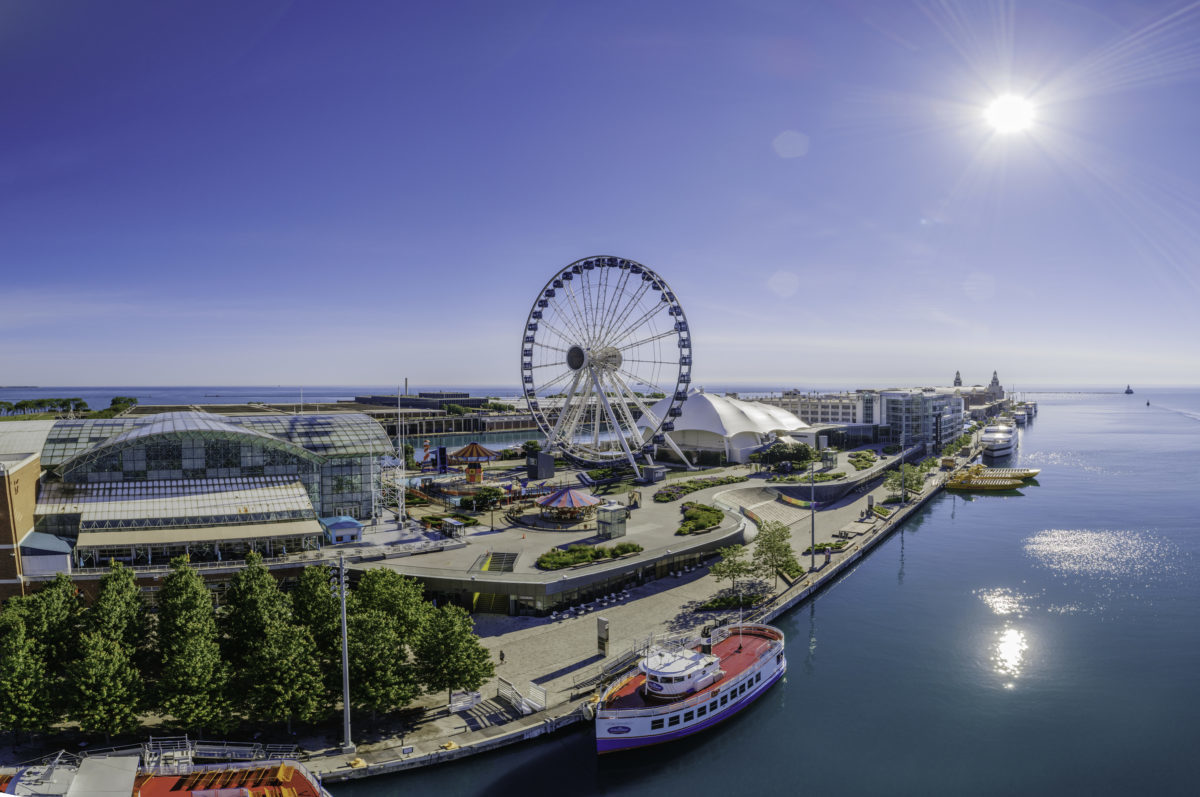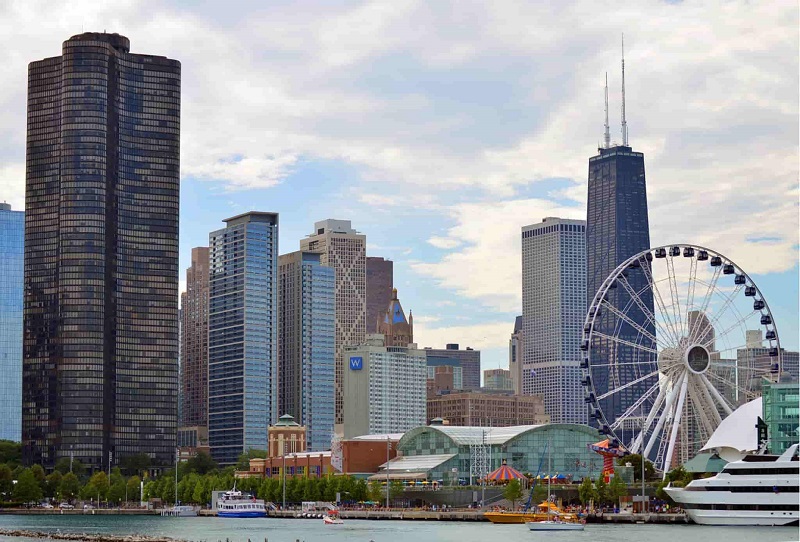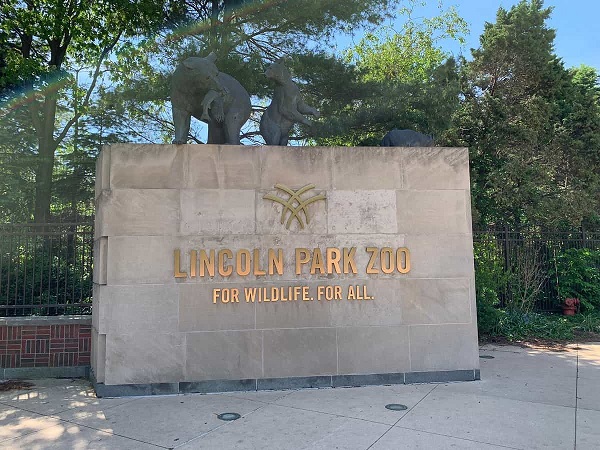
History of Lincoln Park Zoo
Lincoln Park Zoo is more than just a free-admission destination—it’s a living piece of American history. Established in 1868, it is one of the oldest zoos in the United States, starting humbly with just two donated swans from New York’s Central Park.
Over the decades, Lincoln Park Zoo has grown from a modest collection of animals to a globally recognized leader in wildlife conservation, education, and research. By the early 1900s, the zoo had expanded its exhibits and added a variety of species, including bears, monkeys, and big cats. Many of its original buildings, like the Helen Brach Primate House, still stand today—renovated but rich with historical charm.
What sets Lincoln Park Zoo in Chicago, Illinois, apart is its commitment to remaining free and accessible to all. Even through periods of economic challenge, wars, and urban change, the zoo has stayed true to its mission of connecting people with nature.
In recent years, it has become a pioneer in animal welfare science, continuously modernizing habitats to ensure the health and happiness of its residents. From its Victorian-era roots to today’s innovative exhibits, the zoo’s journey reflects both Chicago’s growth and evolving attitudes toward wildlife.

Is it free to go to Lincoln Park Zoo?
Lincoln Park Zoo is completely free to visit—and that’s one of the most remarkable things about it! . Since its founding, the zoo has remained committed to offering open access to wildlife and nature for everyone, regardless of income or background.
Visitors can explore a wide range of animal exhibits, from majestic lions and playful gorillas to penguins and reptiles, all without paying an entrance fee. Even special attractions like the Farm-in-the-Zoo and Nature Boardwalk are included in this free experience.
While entry is free, donations are encouraged to help support animal care, conservation efforts, and educational programs. There are also optional paid experiences, such as carousel rides or seasonal events like ZooLights.
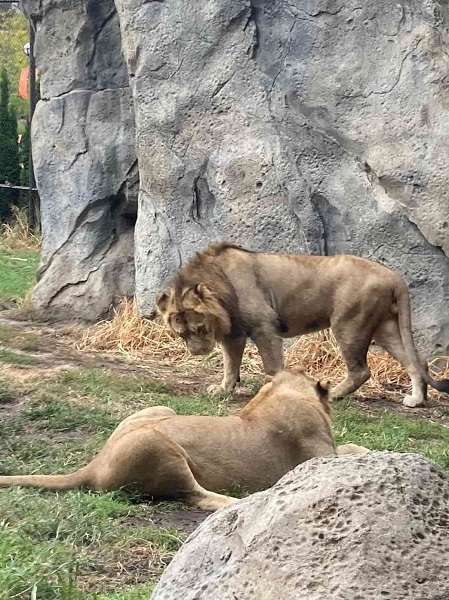
Top Attractions at Lincoln Park Zoo chicago illinois
As one of the most popular free zoos in the country, it offers a wide variety of animal encounters and scenic spots right in the heart of Chicago.
One of the top attractions is the Regenstein Center for African Apes, home to gorillas and chimpanzees in a state-of-the-art habitat. Just steps away, the Lion House features big cats lounging in naturalistic enclosures, offering up-close views of some of the world’s most powerful predators.
Families love the Farm-in-the-Zoo, where kids can meet goats, cows, and chickens while learning about farming and sustainability. For bird lovers, the Kovler Bird House showcases exotic and endangered species from around the globe.
Another must-see is the Nature Boardwalk, a peaceful urban oasis filled with native plants, wildlife, and skyline views—perfect for a relaxing stroll or photo opportunity.
How many animals does Lincoln Park Zoo have?

Lincoln Park Zoo Chicago Illinois is home to more than 1,200 animals, representing nearly 200 different species from around the world. This iconic urban zoo, located just north of downtown Chicago, offers visitors a chance to see everything from majestic African lions and lowland gorillas to red wolves, flamingos, reptiles, and tropical birds—all without paying an entrance fee.
Spanning 35 acres, Lincoln Park Zoo Chicago Illinois has carefully designed habitats that reflect each species’ natural environment. Popular exhibits like the Regenstein Center for African Apes, Kovler Seal Pool, and Penguin Cove allow guests to get up close to animals while learning about their behavior, diet, and conservation status.
In addition to mammals and birds, the zoo also houses reptiles, amphibians, and insects, making it a diverse and educational experience for all ages
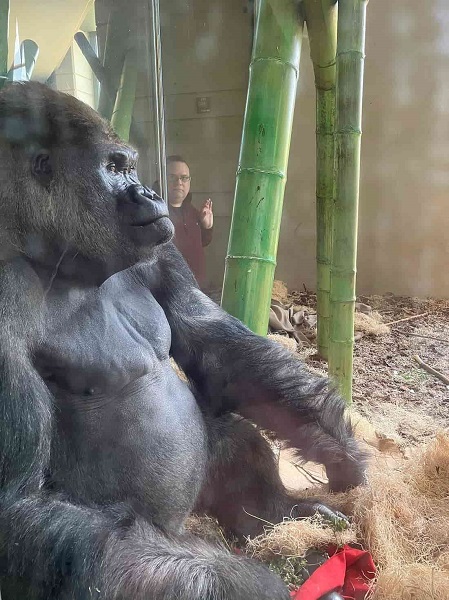
Things to do at lincoln park zoo at night
While most zoos wind down at sunset, Lincoln Park Zoo in Chicago, Illinois comes alive in a whole new way after dark. With special events and seasonal programming, there are plenty of things to do at Lincoln Park Zoo at night that make it a unique and unforgettable experience.
Nighttime events: One of the most popular nighttime events is ZooLights, held during the holiday season. The zoo transforms into a winter wonderland with millions of twinkling lights, festive displays, music, and seasonal treats. It’s a family favorite and completely free on select nights, offering a magical holiday tradition in the heart of the city.
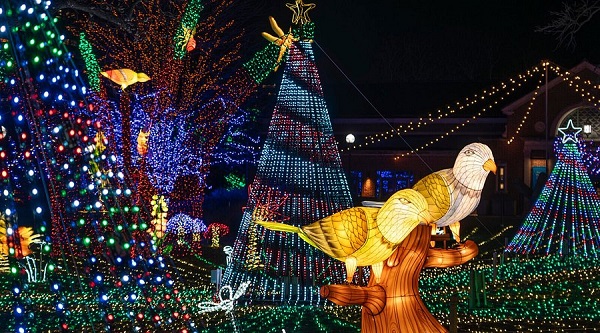
For adults, the zoo hosts special after-hours events like Adults Night Out, featuring drinks, live music, and exclusive animal chats—all without the daytime crowds. It’s a great way to enjoy Lincoln Park Zoo at night in a relaxed, kid-free atmosphere.
During summer, twilight hours are perfect for enjoying the scenic Nature Boardwalk with views of the Chicago skyline, illuminated by the city lights.
Lincoln park zoo hours
Lincoln Park Zoo Chicago Illinois is open 365 days a year, welcoming visitors daily with no reservations required. The general operating hours are:
Gates open: 10:00 a.m.
Buildings and Farm-in-the-Zoo open: 10:00 a.m.
Buildings and Farm-in-the-Zoo close: 4:30 p.m.
Gates close: 5:00 p.m

Attractions near lincoln park zoo:
Lincoln Park Conservatory: The Lincoln Park Conservatory offers a peaceful escape into lush gardens and tropical environments. Established in 1895, this stunning Victorian glasshouse is home to beautiful plant collections, including orchids, ferns, and palm trees. It’s a perfect place to relax and enjoy nature’s beauty, and the best part? It’s free to visit!
North Avenue Beach: For a breath of fresh air and some fun in the sun, head over to North Avenue Beach, located just a few minutes away from Lincoln Park Zoo. This scenic lakeside destination offers sandy shores, stunning views of Lake Michigan, and a perfect spot for picnics, sunbathing, and water sports. It’s ideal for families, couples, or anyone looking to relax by the water.
The Chicago History Museum: A short distance from the zoo, the Chicago History Museum offers an intriguing look into the city’s past. With fascinating exhibits on Chicago’s history, culture, and architecture, it’s an educational stop for anyone interested in learning about the city’s roots. It’s also family-friendly, with interactive exhibits that will keep kids engaged.
Lincoln Park: Adjacent to Lincoln Park Zoo, the larger Lincoln Park is one of Chicago’s most famous green spaces. Stretching over 1,200 acres, it features walking trails, gardens, and beautiful lakefront views. It’s perfect for a leisurely stroll, a bike ride, or just relaxing with a book. You’ll find playgrounds for kids, perfect picnic spots, and even outdoor exercise equipment.
Peggy Notebaert Nature Museum: If you’re a fan of nature, be sure to check out the Peggy Notebaert Nature Museum, located just across the street from the zoo. This educational museum focuses on environmental conservation, wildlife, and ecosystems, with interactive exhibits on local wildlife, a butterfly house, and seasonal events.
Dining and Shopping in Lincoln Park: After a day of exploring, take a break at one of the many restaurants and cafes near Lincoln Park Zoo. The Lincoln Park neighborhood is known for its vibrant dining scene, offering everything from cozy coffee shops to upscale restaurants. Enjoy a bite at The Northman Beer & Cider Garden, or grab a delicious meal at Alinea, one of Chicago’s Michelin-starred restaurants.
.For visit more places in chicago you can visit: Here
Lincoln park zoo parking:
Finding parking at Lincoln Park Zoo Chicago Illinois is relatively easy, but it’s important to plan ahead to ensure a smooth visit. The zoo is located in the heart of Lincoln Park, a busy and popular area, so parking can fill up quickly, especially on weekends and during peak tourist seasons.
Zoo Parking Lots
The zoo has several on-site parking options available for visitors:
Lincoln Park Zoo Parking Garage – Located near the zoo’s main entrance, this paid parking garage is the most convenient option. It offers easy access to the zoo and is a great choice if you plan to spend the day. Rates vary, so be sure to check the latest prices on the zoo’s website.
Street Parking – There is also metered street parking available in the surrounding areas. These spots are free during off-peak hours (usually after 10 PM), but can be hard to find during busy times.
Tips for a Smooth Parking Experience
Use mobile apps like SpotHero to reserve a parking spot in advance in nearby garages.
Be mindful of street signs to avoid parking tickets or towing.
Getting to lincoln park zoo
Lincoln Park Zoo Chicago Illinois is centrally located and easily accessible, making it a perfect destination for both locals and tourists. Here are a few ways to get to the zoo:
By Car:
If you’re driving, the zoo is located at 2001 N. Clark Street, in the Lincoln Park neighborhood. There are several on-site parking options, including the Lincoln Park Zoo Parking Garage. Street parking is also available, but be sure to check for meter restrictions.
Public Transportation:
- CTA Buses: The zoo is well-served by CTA buses, including the #151 and #156 routes, which stop near the zoo entrance.
- CTA ‘L’ Train: The Red Line is your best option for getting close to the zoo. Hop off at the Fullerton station, and it’s a short walk to the zoo.
By Bike:
Chicago is a bike-friendly city, and Lincoln Park Zoo is no exception. There are bike racks near the zoo’s entrance, and Divvy bike-share stations are available nearby.
Walking:
If you’re already in the Lincoln Park area, the zoo is just a short walk from attractions like Lincoln Park Conservatory or North Avenue Beach.

